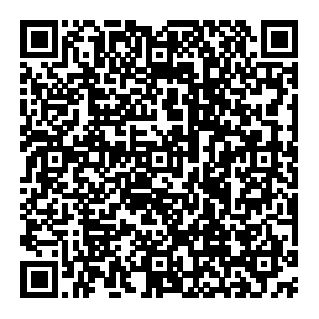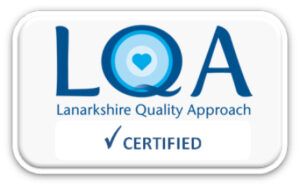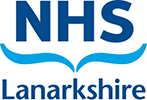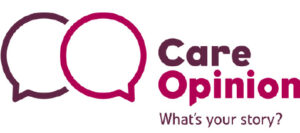Care of Children and Young Person Requiring Gastrostomy Tubes
Information for patients
NHS Lanarkshire Neonatal Department
PIL.CCYPPR.19_10949.L
Types of gastrostomy tubes
PEG (percutaneous endoscopic gastrostomy)
A PEG tube is inserted during a surgical procedure. The tube is passed into the throat and down into the stomach using an endoscope. The tube is then brought out through a hole between the stomach and abdominal wall which has been surgically created. There is a small disc at one end of the tube which secures the tube inside the stomach. An external fixator device, a clamp and a feeding connector are then fitted to the external part of the tube. These tubes generally last around 18 months dependent on manufacturer’s guidelines.
Balloon inflated gastrostomy
A balloon gastrostomy device is initially inserted during a surgical procedure, either into an established tract or via an incision through the abdominal wall, into the stomach. There are two types of balloon device:
A balloon gastrostomy tube
This tube is held in place in the stomach by a balloon filled with water.
A button or low profile device
This is a small device which is held in place in the stomach by a balloon filled with water. It requires an extension set for the administration of medications or feeds. Only the correct extension set should be inserted directly into the button device to avoid any damage to the button.
Both balloon gastrostomy tubes and buttons are held in place, in the stomach, by a small balloon filled with water. The water in the balloon is changed on a weekly basis. These devices require to be replaced every 3-6 months depending on manufacturer’s guidance and individual patient.
Both of these devices can be replaced, without a surgical procedure, by someone who is trained and competent to do so.
ENPLUG’s
Before being discharged home from hospital with a balloon inflated gastrostomy, you will be provided with training on how to use ENPLUG’s. ENPLUG ‘s are designed for emergency use to prevent stoma closure when a gastrostomy device has fallen out. ENPLUG’s can only be used in a gastrostomy tract which has been established for > 3 months.
Daily care of a Gastrostomy Tube
The aim of skin care around the gastrostomy site is the prevention of infection, excoriation and breakdown. This is best achieved by keeping the area clean and dry.
Hospital staff will advise on the best way care for the stoma and the tube for the initial 10 days post gastrostomy tube insertion.
Ongoing care for Peg Tubes
On a daily basis, clean site with cooled boiled water and gently pat dry.
At day 10 post operatively carry out first 360 degrees rotation of tube.
Thereafter, rotate tube 360 degrees on a daily basis.
Inspect skin for signs of redness, swelling, irritation, skin breakdown and leakage.
At 4 week post operatively, loosen the external fixator device and advance the tube approximately 1-3cm (depending on the size of the child) into the stoma and rotate 360 degrees. This also allows the skin around the stoma site to be cleaned thoroughly.
You should avoid opening the fixator device prior to the first advancement of the tube as this may cause future issues with stoma leakage.
This procedure should be repeated once per week thereafter.
Ongoing care for Balloon Inflated Gastrostomy Tube/Button
On a daily basis, clean site with cool boiled water and gently pat dry.
At day 10 post operatively carry out first 360 degrees rotation of tube.
Thereafter, rotate tube 360 degrees on a daily basis.
Inspect skin for signs of redness, swelling, irritation, skin breakdown and leakage.
At 2 weeks post operatively the water in the balloon should be removed and replaced.
This procedure should be repeated once per week thereafter.
The balloon device should be changed every 3-6 months, according to manufacturer’s guidelines and individual child.
Extension sets should be replaced every 2 weeks.
Position during feeding
Wherever possible the child/young person should be positioned in an upright position with their head above the level of their stomach. This position should be maintained for approximately 20 minutes following completion of feed if possible.
If the child/young person shows any signs of shortness of breath (more than usual), sudden pallor, vomiting or coughing stop the feed immediately.
Food Hygiene
Do not touch the feed or any internal part of the feed container or giving sets with your hand.
Visually inspect feed the feed.
Pre-packed liquid feeds are sterile, refer to manufacturer’s guidelines for length of time a feed packet can be kept once open.
Opened packages of sterile feed should have the lid put back on and can be kept the fridge at home for 24 hours. Discard feed that has been refrigerated more than 24 hours.
Powdered feeds should be made up with cooled boiled water at the time they are needed. Follow the recipe provided by the dietician. They are not sterile and can only be hung for four hours if a neonates or immune-compromised or eight hours for other infants and children. Discard feed that has been hung for 4 -8 hours.
Do not use a prep machine to make the feed and do not use a microwave to warm feed.
Feed container should not be topped up once feeding has started.
Giving set should be changed every time feed or container is changed.
If giving bolus feeds from packs – use a bolus adapter to decant. Do not use scissors or sharp implement.
Rotate stock so that it does not go out of date. Plastic containers and feed containers can be recycled
Avoid storing feed or equipment next to radiators, in direct sunlight, in garden sheds or garages when there is a risk of supplies freezing.
Discard feed that is out of date by pouring it down the sink.
Feeding
Wash hands before and after procedure.
Prepare equipment and feed in a clean area (checking feed type and expiry date).
Explain procedure to the child/young person.
Ensure the child/young person is positioned correctly for feeding.
Prime extension set with cooled, boiled water and attach to button (if appropriate).
Flush the feeding tube with an appropriate amount of cooled, boiled water, according to individual care plan and clamp tube/extension set. Bottled water is not recommended.
Bolus Feeding
Attach syringe without the plunger to the feeding tube/extension set and fill with feed.
Release the clamp and slowly administer the correct volume of feed, according to individual care plan.
If the feed is running too quickly or too slowly, alter the height of the syringe slightly. A feed should take between 15-30 minutes.
Flush the feeding tube/extension set, with the appropriate amount of cooled, boiled water, according to individual care plan.
When feed is complete, close the clamp on the tube/extension set and remove syringe and extension set as appropriate.
Pump Feeding
Where necessary, decant the required volume of sterile feed and do not top up feed containers once feeding is in progress. Ensure date and time is marked on bottle when commencing feed.
Set up the pump feeding set and programme the feeding pump as per manufacturer’s instructions.
Connect pump feeding set to feeding tube/primed extension set, release clamp (if in situ) and start feeding pump. When feed is completed stop the pump, disconnect pump feeding set, flush the feeding tube with appropriate amount of cooled boiled water and remove the extension set if used.
Administration of Medications
Medication administration should only be carried out by someone who is trained to administer medications to a specific child. The person should have knowledge of the child, the medication(s) which they require, their uses and possible side effects. All medications should be given as per prescription and medication administration recorded (if appropriate). Ensure water flush is given between each medication administered as per individual care plan.
Administration of medication via Gastrostomy PEG or Button device
Equipment required
- Medications
- Prescription and recording sheet (if required)
- Consent from parent to administer medication (if required)
- Appropriate enteral (purple) syringes
- Cooled boiled water
Procedure
- Wash hands before and after procedure
- Check medication, dose and expiry date
- Prepare correct dose of medication in individual enteral feeding syringes
- Advise child that you are going to give medications
- Prepare a syringe of cooled boiled water
- Prime extension set with cooled boiled water and attach to button (if appropriate)
- Unclamp tube/extension set and administer 5mls water flush followed by medication. REMEMBER if more than one medication is being given then the tube must be flushed with a minimum of 5mls water between each medicine or as per individual care plan.
- Flush with recommended volume cooled boiled water following medications and clamp tube, remove syringe and extension set as appropriate
- Clean and dispose of equipment appropriately
Mouth care
Following the insertion of a gastrostomy the child/young person should still continue to clean their teeth twice daily and have regular dental checkups.
Advice on most appropriate oral care can be discussed with your nurse specialist.
Showers and baths
Until the gastrostomy site has healed, you should clean it as directed. Once the site has healed, the child/young person can shower and bath as normal. Always make sure that you dry around the stoma, as any dampness can lead to the growth of bacteria and develop into an infection.
Nursery and school
The child/young person can attend school as normal. Your community nurse/additional needs school nurse will be able to advise further about this. If necessary, staff at the educational establishment can be taught on how to use the device and what action should be taken if it were to fall out.
Swimming and PE
The child/young person will be able to go swimming once the gastrostomy site has healed. Your nurse specialist will advise you when it is safe to start swimming. If the child/young person particularly enjoys contact sports, the nurse specialist can provide further advice on this.
Troubleshooting
| Problem | Solution |
| PEG tube displacement | Seek immediate medical advice at local A&E department |
| Gastrostomy button displacement | Button must be replaced within 1-2 hours by someone competent to do so |
| Leakage of milk/feed from around gastrostomy stoma site | Discontinue feed and seek advice from appropriate professionals |
| Discharge from gastrostomy stoma site | Contact community children’s/school/specialist nurse for advice |
| Skin breakdown around gastrostomy stoma site | Contact community children’s/school/specialist nurse for advice |
| Overgrannulation around gastrostomy stoma site | Contact community children’s/school/ specialist nurse for advice (please refer to WoSPGHan Guidance for the prevention and management of overgrannulation at gastrostomy and jejunostomy stomas) |
| Vomiting | Discontinue feed and seek advice from appropriate professionals |
| Tube blocked |
PEG – gently try to flush with warm water using push/pull motion (soda water may be used if available). If not resolved, squeeze the tube between fingers along the length of the tube (milking the tube). If still unresolved, gently draw back with syringe and try to flush as before. If tube remains blocked, seek medical attention. Button – prime and change extension set and gently try to flush the button with new set. If not resolved, milk extension set as above. If tube still remains blocked, button should be changed by someone competent to do so. |

Review date: April 2023
Issue No: 01
Reference: PIL.CCYPPR.19_10949.L
21_07256
If you need this information in another language or format, please e-mail:





